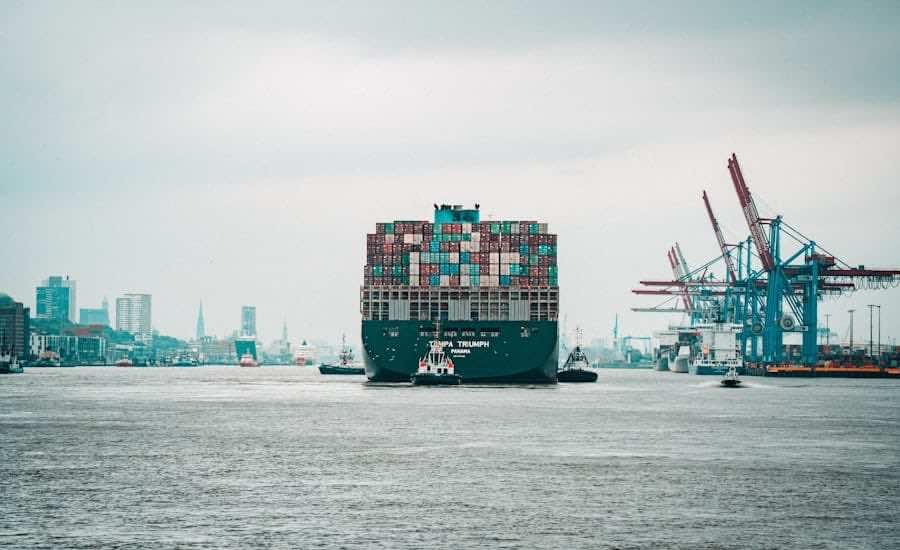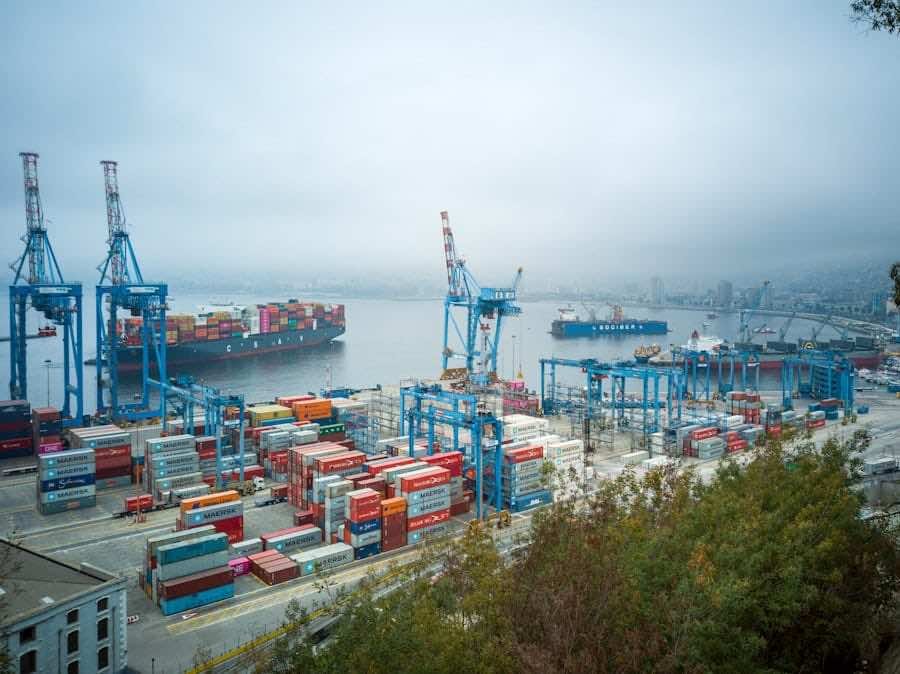Vertical integration is a strategic approach employed by businesses to enhance their operational efficiency and market control by consolidating various stages of production or distribution within a single entity. This strategy involves the merging of different levels of the supply chain, which can include suppliers, manufacturers, and distributors. By doing so, companies aim to reduce costs, improve quality control, and increase their market power.
The essence of vertical integration lies in its ability to streamline processes and eliminate inefficiencies that may arise when different entities handle separate stages of production. In practice, vertical integration can manifest in two primary forms: forward integration and backward integration. Forward integration occurs when a company expands its operations to include distribution or retail functions, thereby gaining direct access to consumers.
Conversely, backward integration involves a company taking control of its supply chain by acquiring or merging with suppliers. This strategic manoeuvre allows firms to secure essential resources and materials, thereby reducing dependency on external suppliers and mitigating risks associated with supply chain disruptions.
Summary
- Vertical integration strategy involves a company controlling multiple stages of the production and distribution process, from raw materials to the final product.
- Types of vertical integration include backward integration (controlling suppliers) and forward integration (controlling distribution channels).
- Benefits of vertical integration strategy include cost savings, improved efficiency, and greater control over quality and delivery.
- Challenges of implementing vertical integration strategy include high initial investment, potential conflicts with suppliers or distributors, and increased complexity in managing multiple business functions.
- Examples of companies using vertical integration strategy include Apple, Tesla, and Amazon, which control various stages of their supply chain to maintain a competitive advantage.
Types of Vertical Integration
Backward Integration
Backward integration is characterised by a company acquiring or merging with its suppliers to gain greater control over the production process. For instance, a car manufacturer may choose to purchase a tyre manufacturing company to ensure a steady supply of tyres for its vehicles. This not only secures the supply chain but also allows the manufacturer to exert influence over the quality and cost of the components used in its products.
Forward Integration
On the other hand, forward integration involves a company expanding its operations towards the end consumer by acquiring or establishing retail outlets or distribution channels. A prime example of this is a beverage company that decides to open its own chain of retail stores to sell its products directly to consumers. This strategy not only enhances brand visibility but also allows the company to capture a larger share of the profit margin that would otherwise go to third-party retailers.
Comprehensive Control
Additionally, there are instances of companies employing both strategies simultaneously, creating a more comprehensive control over their supply chains. This approach enables companies to reap the benefits of both backward and forward integration, ultimately leading to a more streamlined and efficient production process.
Benefits of Vertical Integration Strategy

The implementation of a vertical integration strategy offers numerous advantages that can significantly enhance a company’s competitive position in the market. One of the most notable benefits is cost reduction. By consolidating operations and eliminating intermediaries, companies can achieve economies of scale that lead to lower production costs.
For example, a food processing company that integrates backward by acquiring farms can reduce costs associated with purchasing raw materials from external suppliers, thus improving its overall profitability. Another significant benefit is improved quality control. When a company controls multiple stages of production, it can enforce stringent quality standards throughout the supply chain.
This is particularly important in industries where product quality is paramount, such as pharmaceuticals or food production. By overseeing the entire process from raw material sourcing to final product delivery, companies can ensure that their products meet regulatory standards and consumer expectations, thereby enhancing brand reputation and customer loyalty.
Challenges of Implementing Vertical Integration Strategy
Despite its potential benefits, implementing a vertical integration strategy is fraught with challenges that companies must navigate carefully. One major challenge is the significant capital investment required for acquisitions or expansions. Companies may need to allocate substantial financial resources to purchase suppliers or establish new distribution channels, which can strain their financial health if not managed properly.
This financial burden can be particularly daunting for smaller firms that may lack the necessary capital reserves. Additionally, vertical integration can lead to increased operational complexity. As companies expand their operations across different stages of the supply chain, they may encounter difficulties in managing diverse business functions effectively.
This complexity can result in inefficiencies and communication breakdowns, ultimately undermining the intended benefits of integration. Furthermore, companies may face resistance from employees who are accustomed to existing processes and may be reluctant to adapt to new operational structures.
Examples of Companies Using Vertical Integration Strategy
Several prominent companies have successfully employed vertical integration strategies to enhance their market positions and operational efficiencies. One notable example is Tesla, which has pursued both backward and forward integration in its quest for dominance in the electric vehicle market. By acquiring battery manufacturing capabilities through its Gigafactories, Tesla has reduced its reliance on external suppliers for critical components.
Simultaneously, Tesla has established its own network of retail stores and service centres, allowing it to sell directly to consumers and maintain control over the customer experience. Another example is Amazon, which has effectively utilised vertical integration by expanding its logistics capabilities. The company has invested heavily in building its own delivery network, including warehouses and transportation fleets, thereby reducing its dependence on third-party logistics providers.
This strategic move not only enhances Amazon’s ability to fulfil orders quickly but also allows it to maintain competitive pricing by controlling shipping costs. Such examples illustrate how vertical integration can be leveraged across various industries to achieve strategic objectives.
Factors to Consider Before Implementing Vertical Integration Strategy

Before embarking on a vertical integration strategy, companies must carefully evaluate several critical factors that can influence the success of such an initiative. One key consideration is market conditions and competitive dynamics within the industry. Companies should assess whether vertical integration aligns with their long-term strategic goals and whether it will provide a sustainable competitive advantage in their specific market context.
Another important factor is the company’s existing capabilities and resources. Firms must evaluate whether they possess the necessary expertise and infrastructure to manage additional operations effectively. For instance, a manufacturing company considering backward integration should assess whether it has the technical knowledge and operational capacity to oversee raw material production without compromising quality or efficiency.
Additionally, companies should consider potential cultural clashes that may arise from integrating different organisational structures and practices.
Risks Associated with Vertical Integration Strategy
While vertical integration can offer substantial benefits, it also carries inherent risks that companies must be prepared to manage. One significant risk is the potential for reduced flexibility in responding to market changes. By committing resources to specific suppliers or distribution channels, companies may find it challenging to pivot quickly in response to shifts in consumer preferences or technological advancements.
This rigidity can hinder innovation and limit a company’s ability to adapt to evolving market conditions. Moreover, vertical integration can lead to antitrust concerns if a company gains excessive market power through consolidation. Regulatory bodies may scrutinise mergers and acquisitions that significantly alter competitive dynamics within an industry, potentially leading to legal challenges or forced divestitures.
Companies must navigate these regulatory landscapes carefully to avoid potential pitfalls associated with anti-competitive practices.
Future Trends in Vertical Integration Strategy
As industries continue to evolve in response to technological advancements and changing consumer behaviours, vertical integration strategies are likely to adapt accordingly. One emerging trend is the increasing use of digital technologies to enhance supply chain visibility and efficiency. Companies are leveraging data analytics and artificial intelligence to optimise their operations across integrated supply chains, enabling them to make more informed decisions regarding resource allocation and production processes.
Additionally, sustainability considerations are becoming increasingly important in shaping vertical integration strategies. Companies are recognising the need to align their operations with environmentally responsible practices, prompting them to integrate suppliers who adhere to sustainable sourcing standards or invest in renewable energy solutions within their production processes. This shift towards sustainability not only addresses consumer demand for ethical practices but also positions companies favourably in an increasingly eco-conscious marketplace.
In conclusion, vertical integration remains a powerful strategy for companies seeking to enhance their competitive edge and operational efficiency. By understanding its various forms, benefits, challenges, and associated risks, businesses can make informed decisions about whether and how to implement this approach within their own operations. As industries continue to evolve, those who embrace innovative practices within their vertical integration strategies will likely find themselves at the forefront of their respective markets.
Vertical integration strategy is a key concept in business management, as discussed in the article Are online casinos a viable business model. This strategy involves a company controlling multiple stages of the production process, from raw materials to distribution. By integrating vertically, businesses can streamline operations, reduce costs, and improve efficiency. This article explores how online casinos have successfully implemented vertical integration to create a sustainable and profitable business model.
FAQs
What is vertical integration strategy?
Vertical integration strategy is a business approach where a company expands its operations by acquiring or merging with other companies along its supply chain. This can involve integrating with suppliers (backward integration) or with distributors or retailers (forward integration).
What are the types of vertical integration?
There are two main types of vertical integration: backward integration and forward integration. Backward integration involves a company acquiring or merging with its suppliers, while forward integration involves a company acquiring or merging with its distributors or retailers.
What are the benefits of vertical integration?
Vertical integration can lead to cost savings, improved control over the supply chain, increased efficiency, and the ability to capture a larger share of the value created in the supply chain. It can also lead to better coordination and communication between different parts of the business.
What are the risks of vertical integration?
Some of the risks of vertical integration include increased complexity, potential conflicts of interest, and the possibility of becoming too dependent on a single part of the supply chain. There is also the risk of overextending the company’s resources and capabilities.
What are some examples of companies using vertical integration strategy?
Examples of companies using vertical integration strategy include Apple, which has integrated both forward and backward in its supply chain by owning its retail stores and manufacturing facilities, and Tesla, which has integrated backward by producing its own batteries and forward by selling directly to consumers.
